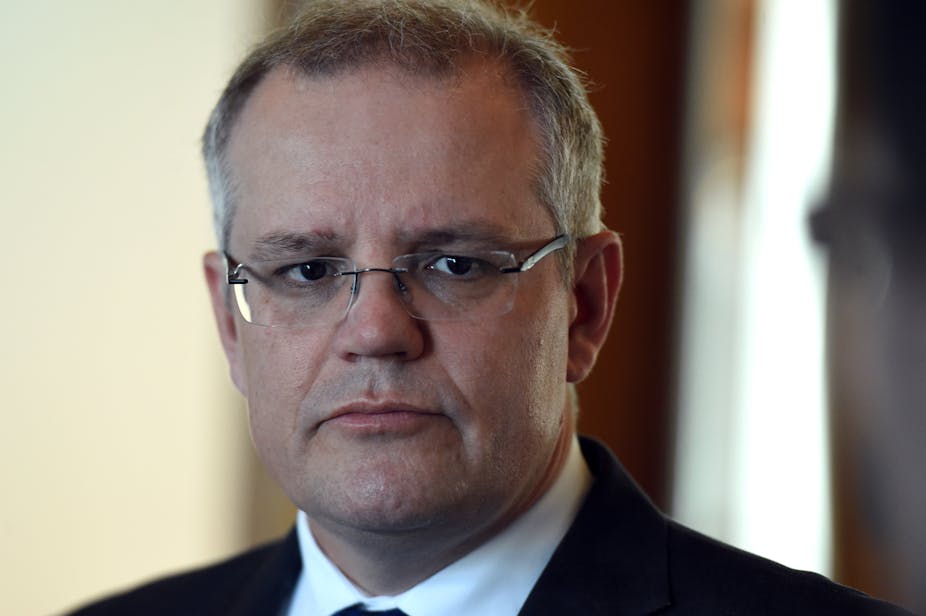I mean, states and territories can’t be left off the hook here. They raise $85 billion a year in state taxes and charges. So that is a big whack of tax and of the top 10 taxes in this country, I think around three of them are at a state and territory level, and they raise 90% of the revenue in this country. – Australian Treasurer Scott Morrison, speaking on ABC Radio National’s AM program, November 10, 2015.
One way to interpret the treasurer’s statement is that, in terms of total taxation revenue collected in Australia:
a) the top 10 taxes account for 90% of national taxation revenue,
b) three of the state taxes are in the top 10 taxes by revenue collected, but
c) these three state taxes are in the bottom tail of the top 10 and in aggregate represent less than 11% of all tax revenue.
If that’s how he meant it, then the treasurer’s statement is correct.
It would be incorrect to interpret that statement as meaning that 90% of all revenue raised in Australia is generated by the states and territories, because that is not true.
The pieces of the tax pie
Detailed data on the revenue collected by the three levels of government – Commonwealth, states and territories, and local – by type of tax is provided by the Australian Bureau of Statistics’ Taxation Revenue data set.
For the 2013-14 financial year, a total of $433 billion was collected.
The Commonwealth is the dominant tax collector with $352 billion, or 81% of the total.
About $69 billion, or 16%, was collected by the states.
About $15 billion, or 3%, in municipal rates by local governments.
By contrast, government own-purpose expenditure is roughly split 50:50 between the Commonwealth and the lower tiers of government. In other words, the Commonwealth collects most of the tax, but then shares it around, providing about a half of the revenue spent by the states through transfers from its taxation receipts.
About a half of the transfer from Commonwealth taxation to state expenditures is untied grants as redistribution of the GST, and the rest as tied grants under the titles of special purpose payments and national partnership payments. These include contributions to the National Disability Insurance Scheme, early childhood and school education including Gonski reforms, and part funding of state public hospitals.
The tax leaderboard
The taxes that generate the most revenue are:
- individual income tax at $170 billion or 39.3% of all revenue collected in Australia,
- income tax on enterprises at $77 billion or 17.7% of all revenue,
- GST at $55.5 billion or 12.8% of all revenue, and
- excise taxes at $26.4 billion or 6.1% of all revenue.
All of these taxes are Commonwealth taxes.
State taxes are the next best at generating revenue. These are:
- payroll tax at $21 billion or 4.9% of all taxes,
- conveyance duty on the transfer of property at $16 billion or 3.7%,
- and taxes on motor vehicles at $9 billion or 2.0%.
Clearly, state taxes should be an important part of the debate on tax reform where “all options are on the table”.
The 2009 Henry Review, the Australian government’s 2015 discussion paper, Re:think, and many others have cogently argued both that state taxes should be reviewed and that a proactive public conversation on tax reform requires involvement of the three levels of government.
Verdict
It would be easy to misinterpret the treasurer’s statement as meaning that states and territories generate 90% of all revenue collected in Australia. That’s not the case.
It is true that the top 10 taxes account for 90% of the total revenue collected in Australia and that three state taxes are in the top 10 taxes by revenue collected. These three state taxes, in aggregate, represent less than 11% of all tax revenue.
If that’s how he meant it, then the treasurer’s statement is correct.** – John Freebairn**
Review
On the face of it the treasurer’s statement does not make sense, as clearly the states do not collect 90% of the tax revenue. The government will often claim that the GST belongs to the states, but even that would not bring the total to 90%.
In conjunction with the current tax review, we are also debating the reform of the federation. A major concern in that discussion is the vertical fiscal imbalance that occurs because the federal government collects 81% of the taxes but the states are responsible for much of the public spending, including health and education.
The Australia’s Future Tax System Review (also known as the Henry Review) made the point that there are at least 125 taxes in Australia, but 90% of the revenue is collected by 10 of these taxes. That includes the three major state taxes of stamp duty, payroll tax and land tax.
I agree that the comment was poorly expressed, but the intention was correct. – Helen Hodgson

